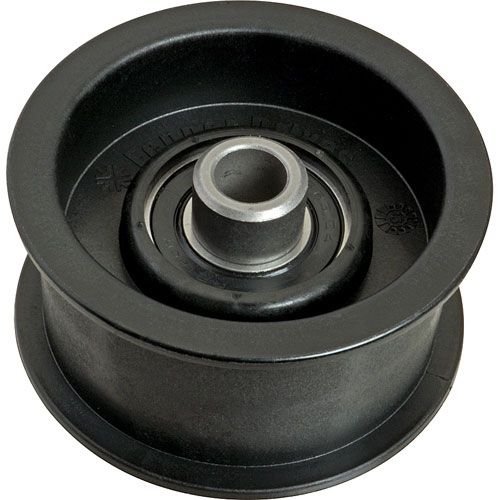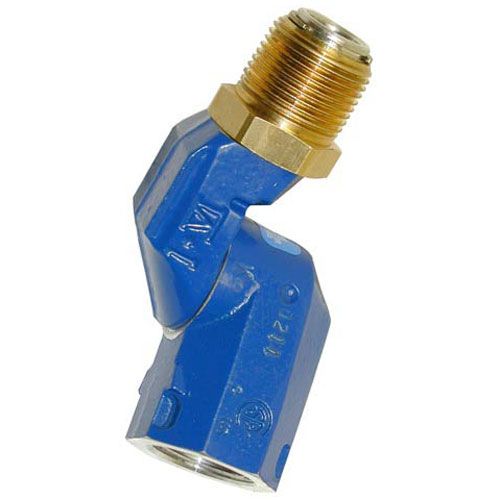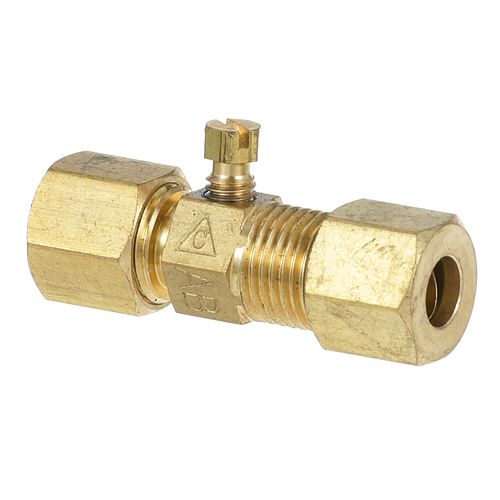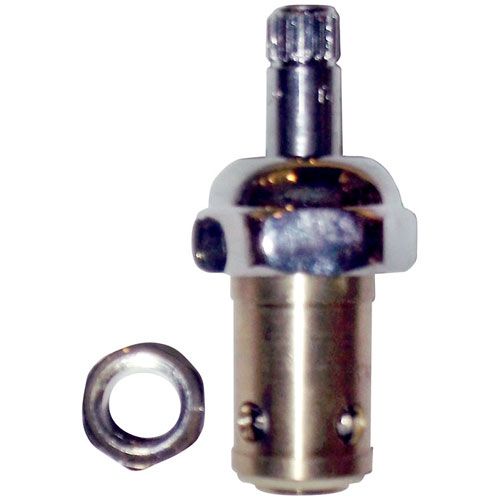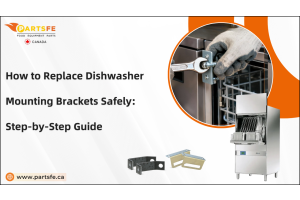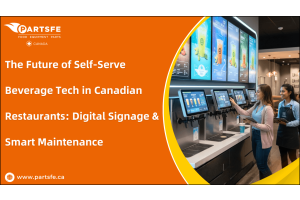How to Implement a Successful Recycling Program in Your Commercial Kitchen
Implementing a successful recycling program in your commercial kitchen is not only an environmentally responsible move but also a smart business decision. With the foodservice industry generating significant amounts of waste daily—from packaging materials to food scraps it’s crucial to adopt sustainable practices that reduce landfill contributions and support eco-friendly operations. A well-structured recycling program can help minimize waste, cut disposal costs, and even enhance your brand’s reputation among eco-conscious consumers. However, success requires more than just placing bins around the kitchen. It involves strategic planning, staff training, and consistent monitoring. This guide will walk you through the key steps to creating a practical, efficient, and effective recycling system tailored specifically for the unique challenges and demands of a commercial kitchen environment.
The Importance of Recycling Programs in Commercial Kitchens
Commercial kitchens, whether in restaurants, hotels, hospitals, or catering services, produce a substantial amount of waste daily. Managing this waste effectively through recycling programs is essential to reducing environmental impact and improving operational efficiency.
-
Food scraps
-
Cardboard boxes
-
Glass bottles
-
Plastic containers
-
Aluminum cans
-
Cooking oil
-
Packaging materials
Without effective waste management, many of these recyclable materials end up mixed with general waste, increasing landfill volume and environmental harm.
-
Reduce Environmental Impact: Recycling minimizes the amount of waste sent to landfills, lowering pollution and conserving ecosystems.
-
Conserve Natural Resources: By recycling materials like paper, plastics, and metals, kitchens help preserve raw materials and reduce energy consumption.
-
Support Local Waste Management Initiatives: Recycling programs aid municipalities in managing waste more efficiently, benefiting the broader community.
Key Benefits of Kitchen Recycling Include:
-
Reducing Landfill Waste: Diverting recyclable materials from trash decreases the burden on landfill sites.
-
Lowering Waste Disposal Costs: Recycling can reduce the frequency and expense of waste removal services.
-
Enhancing Brand Image: Demonstrating eco-friendly practices appeals to customers who prioritize sustainability.
-
Complying with Local Laws: Many regions require businesses to follow recycling regulations to reduce environmental impact.
-
Encouraging a Culture of Sustainability: Engaging staff in recycling initiatives fosters environmental responsibility and teamwork.
Check out this article on cybersecurity best practices for the foodservice industry to learn how to safeguard your restaurant from data breaches and operational risks.
Best Practices for Managing Food Waste and Cooking Oil Recycling
Proper management of food waste and cooking oil is essential for reducing environmental impact and maintaining an efficient commercial kitchen. Following best practices ensures waste is minimized, recycled correctly, and handled safely.
Step 1: Conduct a Waste Audit to Understand Your Kitchen’s Waste Stream
Before you start any recycling program, it’s crucial to understand what types of waste your kitchen produces and in what quantities.
How to perform a waste audit:
-
Collect and Categorize: Over several days, gather waste and separate it into categories such as cardboard, plastics, metals, food scraps, cooking oil, glass, and landfill trash.
-
Measure Volumes: Weigh or estimate quantities to identify the largest waste contributors.
-
Identify Contaminants: Note non-recyclable materials mixed with recyclables to prevent contamination issues.
-
Assess Current Costs: Review your waste disposal expenses to highlight potential savings.
By performing a waste audit, you’ll have a clear picture of where to focus your recycling efforts.
Step 2: Research Local Recycling Regulations and Services
Recycling rules and available services vary by location. Before setting up your program, familiarize yourself with your local waste management guidelines and recycling providers.
-
Check Local Laws: Some municipalities mandate recycling for commercial establishments and specify what materials must be recycled.
-
Contact Recycling Companies: Reach out to local waste haulers or recycling companies to understand their services, accepted materials, pickup schedules, and pricing.
-
Explore Composting Options: If available, composting food scraps can reduce landfill waste and create valuable soil amendments.
-
Identify Hazardous Waste Disposal: For materials like cooking oil and grease, ensure proper recycling or disposal methods are in place to prevent environmental harm.
Having this information helps tailor your program to meet legal requirements and logistical realities.
Step 3: Set Up Recycling Stations with Clear Signage
Once you know what materials you’ll recycle, set up designated collection points throughout your kitchen and back-of-house areas.
-
Use Color-Coded Bins: Assign specific colors to different recyclables (e.g., blue for paper and cardboard, green for plastics, yellow for metals) to reduce confusion.
-
Place Bins Strategically: Position recycling stations near waste generation points, prep stations, dishwashing areas, and staff break rooms to encourage proper disposal.
-
Label Bins Clearly: Use large, easy-to-read signs with text and images showing what can and cannot be recycled.
-
Include Contamination Guidelines: Explain what materials contaminate the recyclables (e.g., greasy cardboard) and how to avoid them.
-
Provide Adequate Bin Capacity: Ensure bins are large enough to handle your kitchen’s recycling volume to prevent overflow and litter.
Effective bin placement and signage are key to encouraging participation and minimizing contamination.
Step 4: Train Your Kitchen Staff Thoroughly
Your recycling program’s success depends on your team. If staff don’t understand or care about recycling protocols, contamination and improper disposal will persist.
-
Hold Training Sessions: Educate all kitchen staff on the importance of recycling, the materials accepted, and how to sort waste properly.
-
Use Visual Aids: Provide handouts, posters, and digital resources explaining recycling guidelines.
-
Assign Roles: Designate recycling champions or team leaders to oversee and encourage compliance.
-
Conduct Regular Refreshers: Schedule ongoing training and reminders to keep recycling top of mind.
-
Incorporate Feedback: Encourage staff to share challenges or ideas to improve the program.
Motivated and informed employees will actively participate, boosting your program’s effectiveness.
Step 5: Manage Food Waste Responsibly
Food waste is a major component of commercial kitchen refuse, and managing it properly is crucial for sustainability.
-
Separate Food Scraps: Use dedicated bins for food waste to keep it out of the landfill.
-
Implement Composting: Partner with a commercial composting service or start an on-site compost system if feasible.
-
Reduce Food Waste: Train chefs and staff on portion control, proper inventory management, and repurposing leftovers.
-
Recycle Cooking Oil: Store used cooking oil in sealed containers and arrange for recycling into biofuel or other products.
Food waste diversion reduces environmental impact and can often save money on waste disposal.
Step 6: Monitor, Measure, and Adjust Your Program
Implementing a recycling program is not a one-and-done task. Continuous monitoring and improvement will ensure long-term success.
-
Track Recycling Volumes: Work with your waste hauler to get regular reports on recycled materials.
-
Audit Contamination Levels: Periodically check recycling bins for contamination and address issues with staff.
-
Review Costs and Savings: Compare disposal fees before and after implementation to evaluate financial benefits.
-
Solicit Staff Feedback: Hold meetings to discuss challenges and solutions.
-
Celebrate Milestones: Recognize team achievements to maintain motivation.
Regular analysis helps refine the program, reduce errors, and maximize environmental and financial benefits.
Step 7: Promote Your Recycling Efforts to Customers and Partners
Sustainability is a powerful marketing tool. Sharing your commitment to recycling can attract eco-conscious clients and partners.
-
Feature Your Program On Your Website: Highlight your recycling initiatives and environmental goals.
-
Display Signage In Public Areas: Let customers know you recycle and encourage their participation (e.g., recycling bins for packaging).
-
Include Recycling in Your Sustainability Report: If applicable, share your progress and goals publicly.
-
Engage on Social Media: Post updates, tips, and successes to build your green brand image.
-
Collaborate with Suppliers: Partner with vendors who share your commitment to sustainable packaging and waste reduction.
Transparent communication builds trust and differentiates your commercial kitchen in a competitive market.
Check out this article on flake ice machines and their role in transforming food service to find how modern technology boosts efficiency and supports sustainable waste management.
Common Challenges in Commercial Kitchen Recycling and How to Overcome Them
Implementing a recycling program in a commercial kitchen can be challenging due to several unique factors. Identifying these hurdles and applying targeted solutions will ensure a more effective and sustainable system:
-
Contamination of Recyclables: Incorrect sorting can ruin entire recycling loads. Regular staff training and clear bin labels help minimize errors.
-
Limited Space: Tight kitchen layouts make recycling stations hard to fit. Use compact or stackable bins and optimize kitchen flow for space efficiency.
-
Budget Constraints: Recycling supplies and services may seem costly upfront. Research providers to find affordable options and emphasize long-term savings.
-
High Staff Turnover: Frequent employee changes disrupt recycling routines. Include recycling training in new hire orientation and provide easy reference materials.
-
Scarcity of Local Recycling Services: Some areas lack adequate recycling facilities. Partner with local groups or invest in on-site waste processing to fill gaps.
By understanding and addressing these challenges, commercial kitchens can build recycling programs that are practical, cost-effective, and environmentally responsible.
Final Thoughts: Sustaining Long-Term Success in Your Kitchen Recycling Program
Sustaining a successful recycling program in your commercial kitchen requires ongoing commitment, continuous staff engagement, and regular evaluation. By fostering a culture of sustainability, embracing feedback, and staying adaptable to new challenges and opportunities, your kitchen can not only reduce waste and cut costs but also set a powerful example in environmental responsibility. Remember, long-term success comes from consistent effort and the collective dedication of your entire team, making recycling an integral part of your kitchen’s daily operations and values.
Looking to boost your commercial kitchen’s efficiency? PartsFeCA offers top-quality replacement parts like fryer heating elements, ice machine evaporator coils, and dishwasher pump assemblies from leading brands like Vulcan, Hoshizaki, and Meiko. With fast shipping and a wide selection, PartsFeCA helps you minimize downtime and maintain a cleaner, greener kitchen.
FAQs
What types of waste can be recycled in a commercial kitchen?
Common recyclables include cardboard, plastics, glass, metals, cooking oil, and food scraps. Proper sorting is essential to avoid contamination.
How can I reduce contamination in my kitchen recycling program?
Train staff regularly and use clear, color-coded bins with simple labels to guide proper sorting. Frequent monitoring also helps keep contamination low.
What are the benefits of recycling in commercial kitchens?
Recycling reduces landfill waste, lowers disposal costs, and improves your kitchen’s environmental footprint and brand reputation.
How do I start a recycling program if space is limited?
Use compact or stackable bins and place recycling stations strategically in less congested areas. Optimize kitchen workflow to accommodate recycling without disruption.


